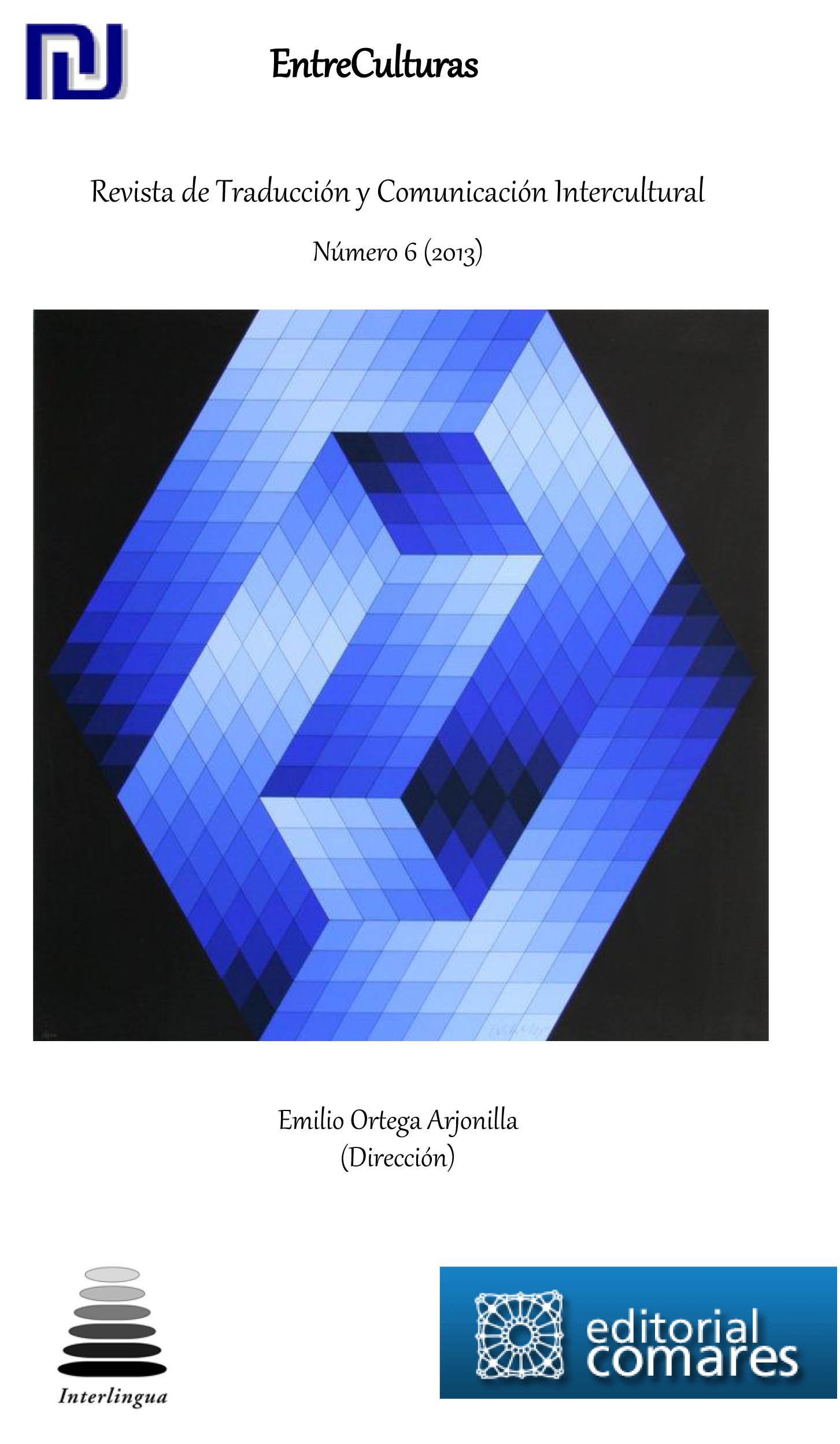TRADUCCIÓN Y DOBLAJE: ANÁLISIS DE FUCK Y SU TRADUCCIÓN AL ESPAÑOL EN JACKIE BROWN
DOI:
https://doi.org/10.24310/Entreculturasertci.vi6.11524Keywords:
audiovisual translation, dubbing, swearwords, the f-word, Jackie Brown, Quentin TarantinoAbstract
Four-letter words are the most obscene and vulgar words in the English language; these refer to parts of the body, bodily functions, human waste, and sex, to cite a few examples. Of all these categories, the one which involves sex is the most obscene of all, and among this group, the most vulgar is fuck (Montagu, 1967; Allan and Burridge, 2006). This paper aims, firstly, to examine a paradigmatic sample of the f-word as it appears in Jackie Brown, a neo noir film directed by Quentin Tarantino; secondly, to carry out research on the categorization of fuck based on the work of McEnery and Xiao (2004); thirdly, to analyse the translation for dubbing of this controversial word into Spanish; and finally, to establish if the presence of fuck in the Spanish version of Jackie Brown has decreased or increased after having carried out the transfer of words.
Downloads
Metrics
References
ALLAN, KEITHYBURRIDGE, KATE (2006): Forbidden Words: Taboo and the Censoring of Language. Cambridge, Cambridge University Press.
ANTONINI, R. Y CHIARO, D. (2009): “The Perception of Dubbing by Italian Audiences” en Díaz Cintas, J. y Anderman, G. (eds.): Audiovisual Translation: Language Transfer on Screen. Basingstoke, Palgrave MacMillan.
COMAS, ÁNGEL (2005): De Hitchcock a Tarantino. Madrid, T&B Editores.
DEL ÁGUILA, Mª E. Y RODERO ANTÓN, E. (2005): El proceso de doblaje take a take. Salamanca, Universidad Pontificia de Salamanca.
DÍAZ CINTAS, JORGE (2001): La traducción audiovisual: El subtitulado. Salamanca, Ediciones Salmar.
JAY, TIMOTHY (2001): Why We Curse: A Neuro-Psycho-Social Theory of Speech. Philadelphia/Amsterdam, John Benjamins Publishing Company.
MCENERY, A. Y XIAO, Z. (2004): “Swearing in modern British English: The Case of Fuck in the BNC”, Language and Literature 13/3, 235-268.
MONTAGU, ASHLEY (1967): The Anatomy of Swearing. New York/London, Collier-Macmillan.
SOLER PARDO, BETLEM (2012): Swearing and Translation: A Study of the Insults in the Films of Quentin Tarantino. Valencia, Servei de Publicacions de la Universitat de València.
TARANTINO, QUENTIN (1998): Jackie Brown. London, Faber and Faber Limited.
PUJOL, DÍDAC (2006): “The Translation and Dubbing of ‘Fuck’ into Catalan: The Case of From Dusk till Dawn”, The Journal of Specialised Translation, 6, 121-133.
TOLEDANO BUENDÍA, CARMEN (2002): “Algunas consideraciones generales sobre la traducciñn, la obscenidad y la traducciñn de la obscenidad”, Revista Canaria de Estudios Ingleses, 44, 217-232.
FILMOGRAFÍA
ReservoirDogs. D: Quentin Tarantino. P: Lawrence Bender, Harvey Keitel. SC: Q. Tarantino, Roger Avary. Du: 102’ Live Entertainment, 1992.
PulpFiction. D: Quentin Tarantino. P: Lawrence Bender. SC: Q. Tarantino, Roger Avary. Du: 154’. Miramax Films, 1994.
Four Rooms: The Man from Hollywood. D: Quentin Tarantino. P: Lawrence Bender, Heidi Vogel, Paul Hellerman, Scott Lambert. SC: Q. Tarantino. Du: 97’ (whole film) Color. A Band Apart-Miramax, 1995.
Jackie Brown. D: Quentin Tarantino. P: Lawrence Bender, Paul Hellerman. SC: Q. Tarantino (adapted from Elmore Leonard‘s novel Rum Punch). Du: 151’. Color.Lawrence Bender Productions-A Band Apart-Miramax- Mighty Afrodite Productions, 1997.
Kill Bill vol I. D: Quentin Tarantino. P: Lawrence Bender. SC: Q. Tarantino. Du: 111’. A Band Apart-Miramax, 2003.
Kill Bill vol. II. D: Quentin Tarantino. P: Lawrence Bender. SC: Q. Tarantino. Du: 136’. A Band Apart-Miramax, 2004.
Grindhouse: Death Proof. D: Quentin Tarantino. P: Elizabeth Avellan, Robert Rodríguez, EricaSteinberg and Quentin Tarantino. SC: Q. Tarantino. Du: 95’. The Weinstein Company, 2007.
Inglorious Basterds. D: Quentin Tarantino. P: A Band Apart-A ZehnteBabelsberg Film GmbH. SC: Q. Tarantino. Du: 146’. Universal-The Weinstein Company, 2009.
Downloads
Published
How to Cite
Issue
Section
License
All contents published in Entre culturas. Revista de traducción y comunicación intercultural are protected under the Creative Commons Attribution-NonCommercial-ShareAlike 4.0 International (CC BY-NC-SA 4.0) license. All about this license is available in the following link: <http://creativecommons.org/licenses/by-nc-sa/4.0>
Users can copy, use, redistribute, share and exhibit publicly as long as:
- The original source and authorship of the material are cited (Journal, Publisher and URL of the work).
- It is not used for comercial purposes.
- The existence of the license and its especifications are mentioned.
There are two sets of authors’ rights: moral and property rights. Moral rights are perpetual prerogatives, unrenounceable, not-transferable, unalienable, imprescriptible and inembargable. According to authors’ rights legislation, Entreculturas. Revista de traducción y comunicación intercultural recognizes and respects authors moral rights, as well as the ownership of property rights, which will be transferred to University of Malaga in open access. The property rights are referred to the benefits that are gained by the use or the dissemination of works. Entreculturas. Revista de traducción y comunicación intercultural is published in an open access form and it is exclusively licenced by any means for doing or authorising distribution, dissemination, reproduction, , adaptation, translation or arrangement of works.
Authors are responsable for obtaining the necessary permission to use copyrighted images.





7.png)
